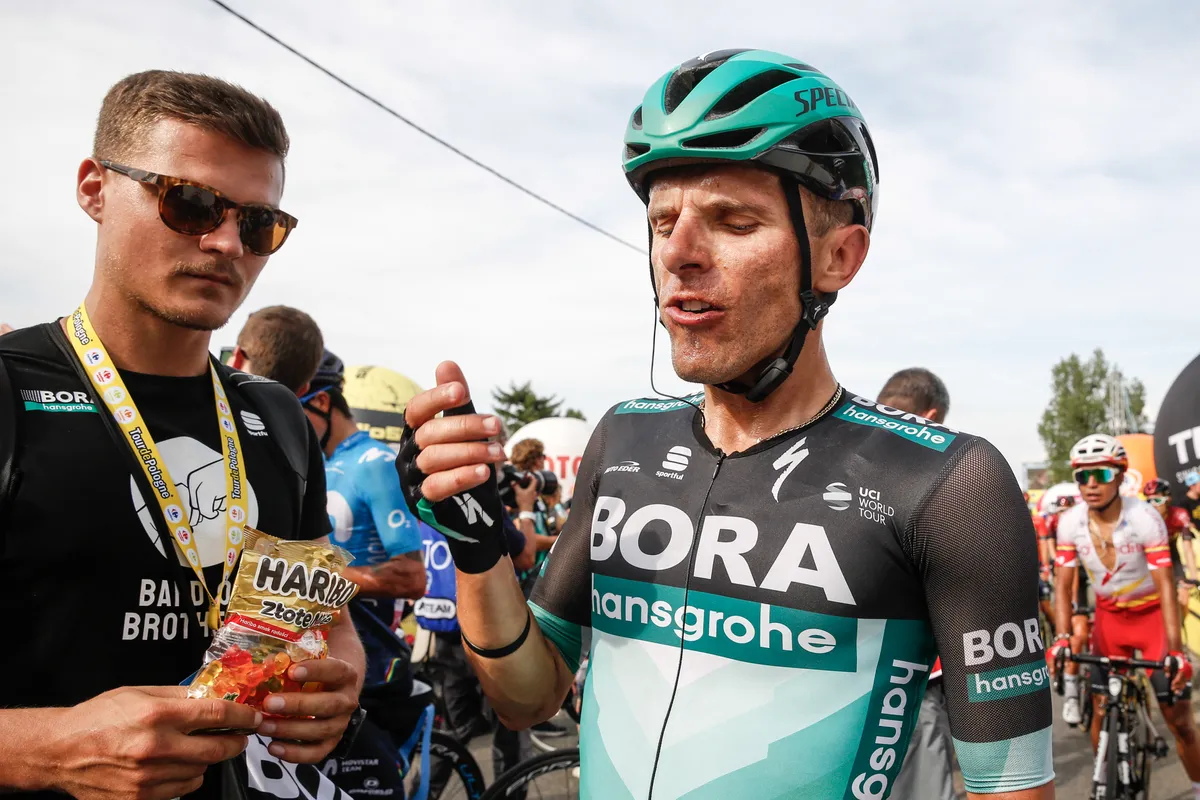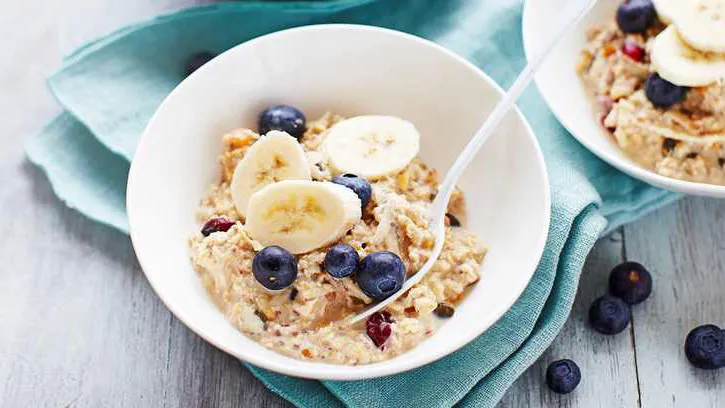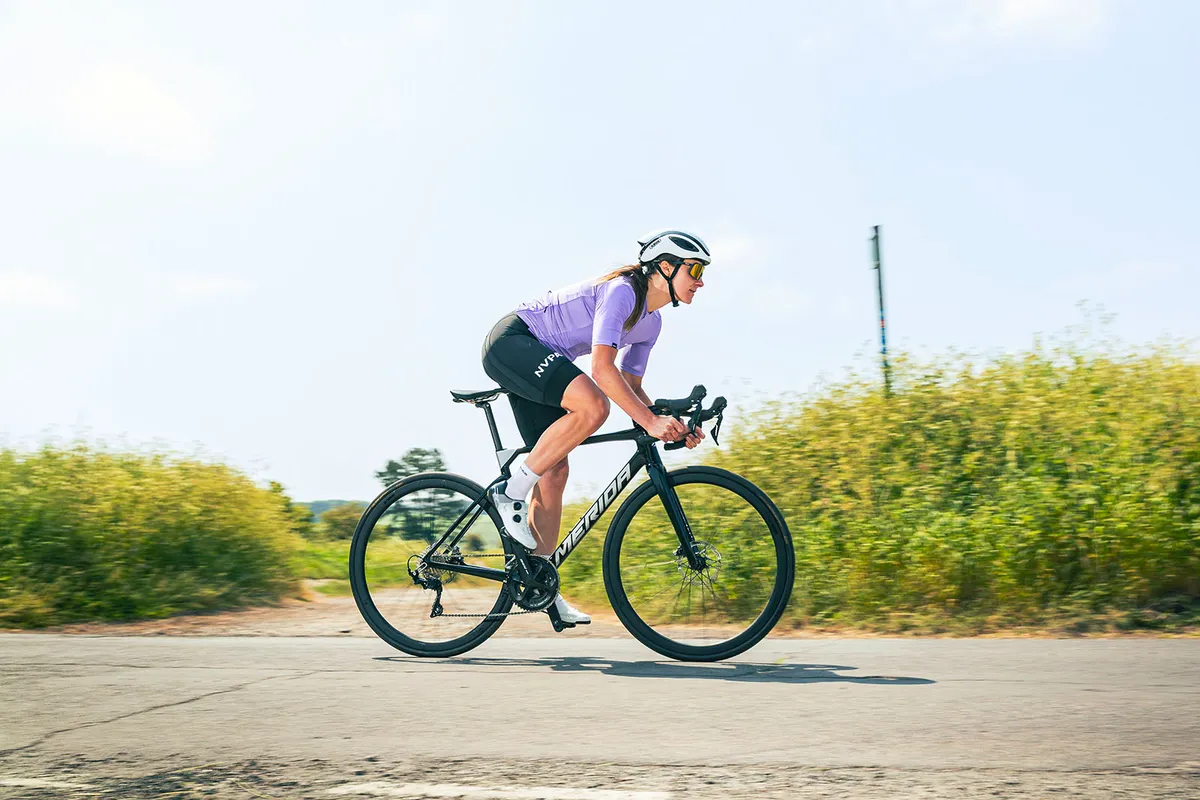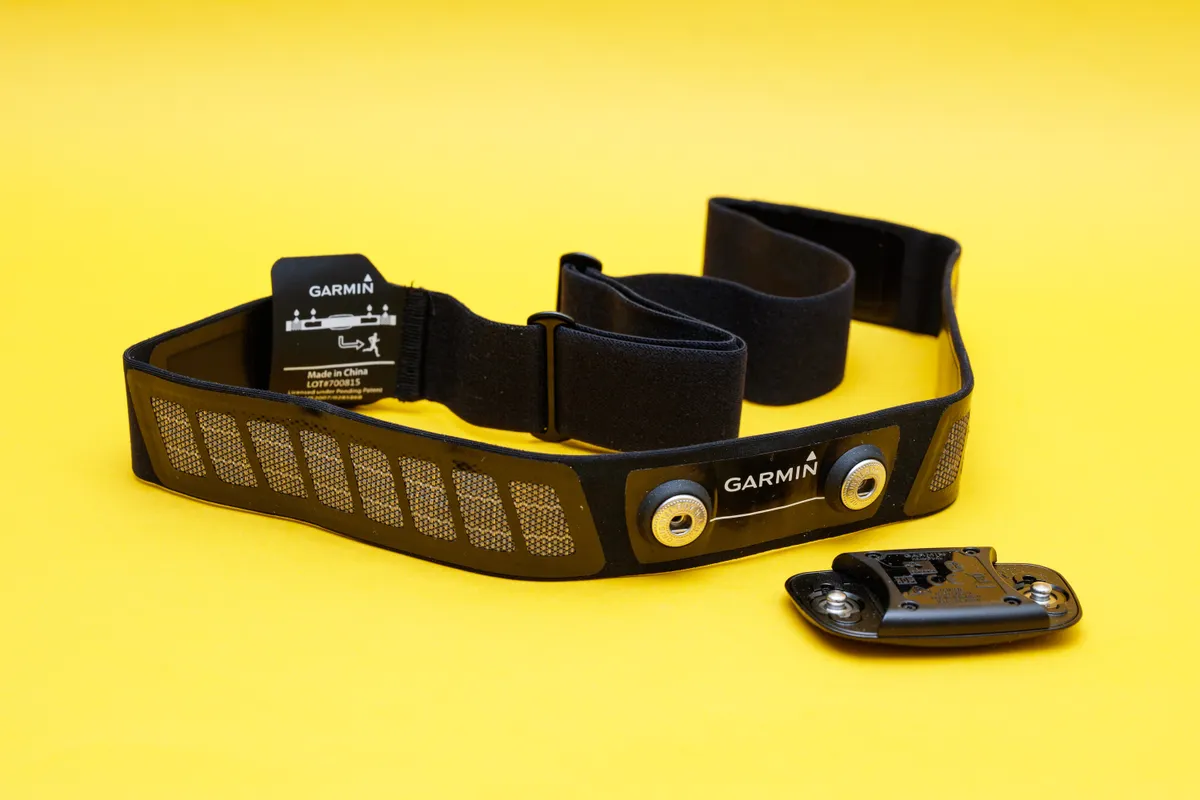The bonk is a funny name for a terrible feeling, when suddenly there's nothing left in the tank, the legs turn to jelly and getting to the finish or just back home becomes an altogether supreme effort of will.
There are many names to describe this feeling, with 'hitting the wall', 'la fringale' and 'the knock' all popular in the peloton.
In a race or sportive, bonking certainly means game over. Your hopes of a good placing or time go out of the window. While touring or bikepacking in unfamiliar territory, a sudden loss of energy can be dangerous.
What's more, bonking in hard training sessions will prevent you completing the interval sets. You'll forgo the intended training effect, such as raising your VO2 max.
Counterintuitively, extinguishing your energy reserves on the bike is detrimental to fat loss goals. You're more likely to over-eat ultra-processed foods in the hours after a ride rather than controlling snacking.
In this article, we'll look into the science behind this terrible sensation and share our top tips for avoiding it.
What is bonking?

The simple explanation for its occurrence is that long-endurance exercise deplete the body’s store of glycogen, which produces the energy required to maintain performance.
When the glycogen depletes entirely, the body has no more fuel and instead burns fat, resulting in a surge of fatigue and a performance collapse.
That’s the simple version anyway, but research shows it may be more complex than this nutritional description suggests, with genetics, mental factors and training all playing a role.
So in this examination of the bonk, we start with the basics: the nutritional causes and how you can safeguard yourself against them; and then we move onto the more complex and disputed aspects.
What does bonking feel like?

A full-blown bonk is more than just the feeling of tired legs and a lack of motivation. It slowly develops into feelings of nausea, extreme physical weakness and absolute dread.
Initial cravings for food will quickly be followed by a negative internal monologue that will increase your exertion levels.
As it takes a greater hold, headaches, nausea and dizziness take over, leading to a loss of focus and confusion.
If you're riding with a bonking rider, it's at this point you'll notice irritability and a lack of communication as they suck your rear wheel, clutching for any relief from the pain.
The final stage of the bonk is the complete inability to function physically, with a need to get off the bike immediately and a burning desire to consume every chocolate bar in the nearest convenience store.
Unfortunately, nausea makes food intake difficult at this point, leading to a Catch-22 situation.
Every rider will experience the bonk at some point, but identifying it early on will give you a better chance of avoiding it.
What to eat to avoid bonking

If you don’t refuel properly, you may bonk during your next session, particularly if you train on a daily basis.
Timing is crucial here, because for the four hours immediately following vigorous exercise, carbohydrate is converted into muscle glycogen at three times the normal rate.
A mixture of carbs and protein soon after a session is one of the steps to recover faster from a hard ride.
Miss this window and your recovery will be much slower. Researchers from Loughborough University found low glycemic index (GI) meals work best.
Athletes who ate tinned peaches, yoghurt, muesli and pasta (low GI) subsequently exercised for 12 minutes longer at the same speed than athletes on a high GI diet, featuring white bread, bananas and Lucozade (a British energy drink).
“The low GI diet burned more fat, sparing muscle glycogen for later in exercise,” says Professor Dr Emma Stevenson of Newcastle University.
“The athletes also reported feeling more satiated after low GI recovery meals even though they contained the same calories – so it should help with ongoing weight loss too.”
How to prevent yourself from running out of fuel

A cyclist’s best protection against the bonk is to ensure that glycogen is fully topped up before starting and that it’s replenished throughout the ride.
The former is generally achieved through carbohydrate loading – that’s ensuring all meals in the 48 hours prior to a big event or training ride contain an adequate level of carbohydrate.
But this certainly shouldn’t be taken to extremes. Many amateur athletes often use the carb-loading excuse to pig out on pasta, potatoes and rice, believing it will protect them from the bonk. Unfortunately, it’s not that simple.
"Every day, you need about 7-10g of carbohydrate per kilogram of body weight to keep glycogen fully topped up," says Dr Karen Reid, a lecturer in nutrition and sports nutrition at Cardiff Metropolitan University.
“Overloading on carbs will result in weight gain.”

Clearly pasta, rice and potatoes are not suitable for on-bike snacks, so cyclists generally use a sports drink, gels, energy bars and other portable snacks to replenish glycogen stores during the ride.
However, knowing how to make your own energy bars saves money. And there's nothing wrong with homemade sports nutrition, such as bananas and flapjacks.
Drinking a good carbohydrate energy drink is essential, because it also helps with rehydration as well as packing in some calories. Picking the right one is trickier.
Essentially, it’s a balancing act between glycogen replenishment and rehydration, because the two offset each other.
The higher the carbohydrate levels of the drink, the more it disturbs rehydration and the harder it is to stomach.
For that reason, many riders opt for an isotonic drink containing about 6 to 7 per cent carbohydrate, which balances the need for glycogen replenishment with hydration.
How to preserve glycogen stores

There is some evidence that mixing a few things into your sports drink may delay glycogen depletion further.
This is because studies have shown that ingesting caffeine before and during exercise results in performance increases, particularly in bouts of over two hours.
While the exact mechanism remains unclear, one theory is that caffeine increases the release of free fatty acids into the blood early in exercise. This increases muscle-fat oxidation and decreases carbohydrate oxidation, sparing muscle glycogen.
"You don’t need a lot of caffeine to get the maximum effect,” says Professor Asker Jeukendrup of Birmingham University and Director of Sport Strategy for Red Bull–BORA–hansgrohe, whose study found that caffeine can boost the carbohydrate absorption rate by as much as 26 per cent.
“Two or three milligrams per kilo of body weight is about right.”
In terms of coffee and cycling, a double espresso or Americano, flat white or cappuccino made with a double shot contains 150mg to 180mg of caffeine. This drink falls into the 2mg to 3mg of caffeine per kilo range for a 75kg to 90kg rider.
Can protein stave off bonking?

Another controversial area is protein. This has long been used as a recovery food to repair muscle damage, but now some scientists believe protein may work during exercise too, as extra protection against the bonk.
The supporters of protein point out that during prolonged exercise it can contribute 5 to 10 per cent of total energy demands.
They also say that although carbohydrate remains the principle fuel source, having a drink with a carbohydrate/protein ratio of about 4:1 means you’re topping up your protein stores too.
This additional energy source could make the difference between bonking and not.
Some studies have found this to be the case, but others have found that protein had no extra effect. The jury remains out, but if you’re particularly prone to the bonk, it could be worth giving protein a try.
Little and often

Another common mistake is to assume you don’t need to start topping up glycogen levels until well into a ride.
Researchers from Maastricht University disproved this by examining 10 male subjects on a three-hour cycle ride. They found sports drinks reduced the glycogen used to maintain a certain pace all through exercise, not just at the end when the bonk threatened to debilitate. So it’s important to get sipping early.
Finally, it’s crucial to know exactly how much carbohydrate to consume during a ride to maximise your chances of avoiding the bonk.
Helpfully, a separate study by the Gatorade Sports Science Institute found that the optimum amount was between 30 and 60g of carbohydrate per hour.

It’s probably closer to the latter for most people, which, surprisingly, is almost a litre of isotonic drink per hour.
A benefit of training with a power meter is that your bike computer can convert your power expenditure in watts into calories as you ride.
Roughly a third of total calories burned per hour will be carbs, so you know how much to eat to replace that.
How to train to beat the bonk

You can train to reduce your propensity to bonking by improving your cycling endurance. The best way to do this is base training.
This low-intensity work increases the size of your aerobic engine. It also makes it more economic by increasing recruitment of slow-twitch muscles fibres.
Compared to fast-twitch muscles fibres, slow-twitch fibres are more fatigue-resistant and fuel-efficient: they use less of our finite glycogen stores and more fat, which we have in abundance.
Therefore, an improved ability to pedal with slow-twitch muscle fibres translates into better aerobic fitness and decreased likelihood of bonking.

Tom Bell, a coach at High North Performance and BikeRadar contributor, recommends using a metric called Efficiency Factor to track your aerobic fitness.
By training with power meter and a heart-rate monitor, you can observe the relationship between watts and beats per minute on long rides.
An upwards drift in heart rate as your power stays steady could indicate you need more base miles. But if your heart rate doesn't drift or or even drops over time at a given power output, that's a good sign.
Are male cyclists more likely to bonk?

Just a male thing? Recently, a team from Springfield College in Massachusetts studied the bonk in marathon running, where it’s commonly known as ‘the wall’.
Rather than focusing on nutrition, their study looked at other factors such as expectation and gender. Of the 300 runners studied, 43 per cent felt they’d bonked.
The majority of these were men and the results showed they were almost twice as likely to succumb.
The researchers believe this is partly due to expectations: 28 per cent of the men said they ‘expected’ to hit the wall compared to 20 per cent of women, but competitiveness may also play a key role.
This may be largely a function of the men being more likely to push the pace and, as a result, experience more characteristics of the wall than the women, the researchers concluded.
Or could it be that men are just genetically more prone to bonk. Some scientists attribute women's higher fat burning capacity to their success in ultra-endurance cycling.
The Dutch researchers found no correlation with age or previous performance: the faster and more experienced athletes were just as likely to bonk.
In fact, runners who had hit the wall before were the most likely to hit it again.
Can anxiety cause you to bonk?

A school of thought links a propensity to bonk with pre-race nerves. This is based on the ‘Cusp Catastrophe Model’ formulated by L Hardy and J Fazey in a 1987 paper.
This paper states that when anxiety is low, for example in training, physiological arousal (increased heartbeat, sweaty palms, butterflies in the stomach) will interact with performance in the shape of an inverted ‘U’, that is, the more physiologically aroused an athlete is, the better their performance will be up to a certain point when it will tail off as gradually as it rose.
But when anxiety is high, increased physiological arousal will be beneficial up to a certain point, but not beyond it.
It's possible that a very nervous athlete may suffer a catastrophic drop in performance, exactly like a bonk. This tallies with the experience of many riders who 'choke' in big races.
Most sports psychologists agree the best way to combat this kind of bonk is to build self-confidence.
For example, as humans we base our level of confidence on our most recent experience, so for a nervous individual it's important that this experience is positive.
Given that during training anxiety levels are low, performance is likely to be high. So for nervous individuals it might be beneficial not to do any warm-up races prior to a major event. Then the rider will go into the event confident from the results of their low-anxiety training.

